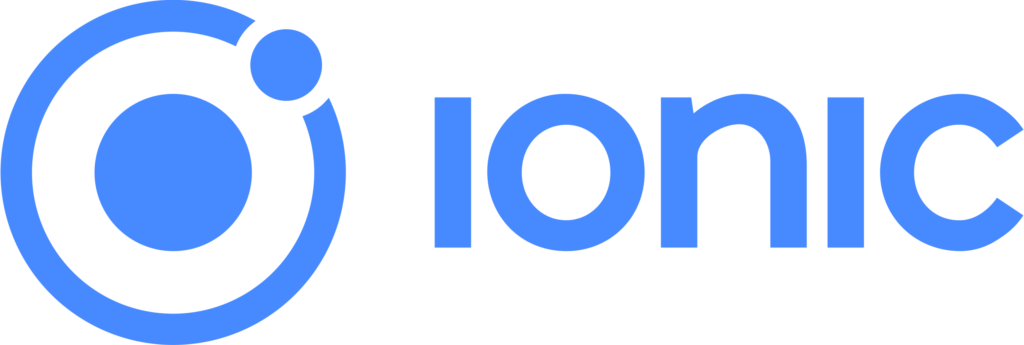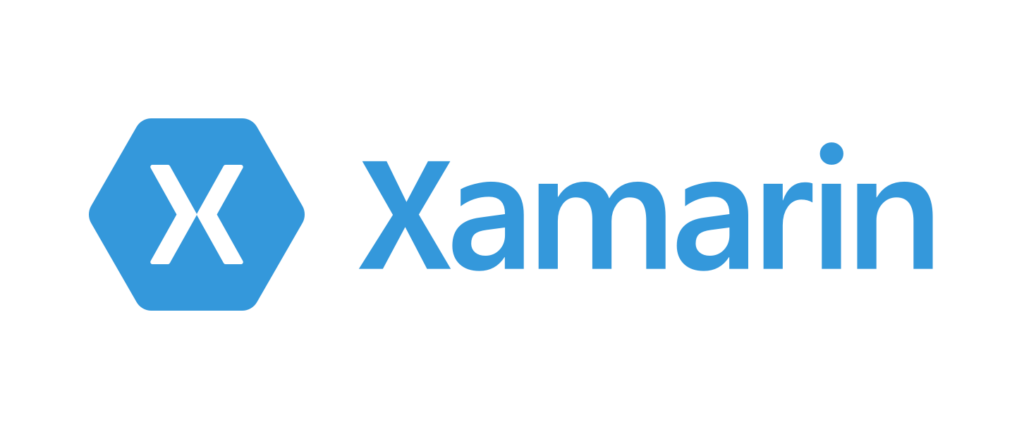SHARE
Guide to Cross-Platform Mobile Development

Contents
Contents
One of the most efficient ways to reach a larger audience with a mobile app is to have a cross-platform mobile app.
Generally, cross-platform mobile apps are available for both iOS and Android. While not every app is cross-platform, in order to maximize availability to end users it is often desired to have apps in both the iOS App Store and the Google Play Store.
Cross-platform mobile development refers to the process of building an app for iOS and Android from a single codebase, saving time and money. Cross-platform mobile development allows you to allocate time and resources towards improvements and additional feature sets as opposed to building an app twice in two different programming languages.
Keep reading to learn more about cross-platform mobile development.
An Overview of Cross-Platform Mobile Development
So why did no one else think about making their designed app available on both platforms? There is a simple answer to that; initially, the developers faced a major hurdle: it was extremely difficult to design a backend network that worked for multiple platforms.
Hence, the developers stuck to building native applications for each mobile operating system.
However, this was not only time-consuming and expensive but had limited usage because the app designed for one operating system could not be repurposed for another.
What changed then? Well, some genius came along the way and designed a cross-platform software tool. The cross-platform software tool eased things for developers because they only had to write the code once and then that code was modified and compiled for multiple platforms.
Cross-platform mobile development has certainly widened the horizon for tech developers and businesses to reach a far greater audience while also saving their time and resources.
Benefits of Cross-Platform Mobile Development
Many people prefer cross-platform mobile development over native apps due to their numerous benefits.
We have discussed cross-platform mobile development and how it essentially works, but now let’s take a deeper look into all the benefits that this new technology brings.
Cost
One of the major benefits of cross-platform mobile development is that it is more resourceful and financially favorable for developers. With the native apps, the developers have to develop the same mobile application for both platforms, i.e., Android and IOS.
This essentially means that they will have to use the same amount of resources twice, and that comes about to be a huge investment of around $50,000-$170,000.
On the other hand, cross-platform mobile development is not only more efficient and simpler but majorly helps with developing quality apps on low budgets.
The cost to develop a cross-platform development is $15,000-$20,000+. The huge difference in the price is simply because cross-platform apps are quicker to develop, take less time for quality testing, and only require the code to be written once.
Speed
Another benefit of cross-app development is that it takes much less time to develop it as compared to a native app.
This is because the developers only need to write the source code once for the cross-app development, unlike native apps, where the same code needs to be written twice for both platforms.
With the added benefit of low-cost, cross-app development is quicker to develop and takes around 6 weeks to 12 weeks. While a native app may take even longer than 3 to 4 months. This only tells us that when it comes to efficiency, cross-app development is certainly the right choice.
Reduced Overhead (Less Employees)
When it comes to developing a cross-platform app development, the work required is generally lesser than developing a native app. Hence, you will need fewer employees who can write the code more efficiently for the app.
This also indirectly means that your overhead cost will be reduced, and it will save you some money to add to the modification and add special features to the app itself.
Moreover, since the code doesn’t need multiple technologies, you don’t need to have extensive experience or be highly skilled at designing the code. This, again, adds to a further reduction in your app-designing cost and frees up room for investment in the app technology itself.
Don’t Repeat Yourself (DRY) — Code Reusability
Don’t repeat yourself essentially means that you should avoid writing duplicated code as much as possible while programming or developing an app.
When you build a native Android app, you will have to repeat the entire code for all the other platforms to which you will be adding that app.
However, with hybrid mobile app development, you don’t need to write a separate code for several operating systems.
You can use a single code for all the platforms and cut down on time by avoiding repetitive tasks such as API calls, data storage, data serialization, and analytics implementation.
By using cross-platform app development, you not only follow the “Don’t Repeat Yourself” principle but also help you design a more efficient, more user-friendly app. Sounds like the whole package deal, doesn’t it?
Synchronized App Releases
Do You know how it feels when a friend tells you to download a cool app that is not available on your mobile platform? You can totally prevent that with the help of cross-platform app development.
When you write the code for the app, it will be modified according to both platforms and thus, you will be able to synchronize the release of the app on both platforms and engage a wider range of audience.
Fortunately, you can synchronize app releases on native apps too, but at the cost of higher financial investment and developing the same code and resources twice.
Consistent User Experiences
If an app has the same source code, it has the same features and usability regardless of the platform it may have been accessed from. This is essentially the case for cross-platform mobile development.
Unlike native mobile apps, where the user experience may vary across different platforms, cross-platform leads to higher user engagement.
Through cross-platform development, you are engaging your users and allowing them to have a consistent experience regardless of the platform that they accessed the app from.
This leads to building credibility and a more positive image of the app, which again leads to greater usage and return on your investments.
Drawbacks of Cross-Platform Solutions
Even though it has a huge variety of benefits, cross-platform mobile app development has some drawbacks, due to which some people prefer native apps over them. We have listed them below and will go through them one by one.
Lag Time for New OS Features
One popular disadvantage of cross-platform frameworks is that it takes a lot of time for the new updates to show up on both platforms.
This is majorly due to the fact that the applications designed using the same course take some time to update the new features and then make these features available for update across both the platforms of Android and IOS.
As compared to cross-platform apps, the updates in native apps are made available much faster since only one platform takes the time to update the application according to the new features and make them available on the operating system.
Not Supported by Wearables or TVs (watchOS, tvOS)
Another disadvantage of cross-platform apps is that they aren’t truly cross-platform. This essentially means that you cannot access the cross-platform apps on all the platforms, such as your wearables or TVs.
This is simply because cross-platform apps have been mainly developed for mobile and other operating systems, and your wearable or TV might not have made it to that list.
However, because native apps are only designed for one operating system, you can easily access them on your wearables or your TVs.
But keep in mind that you may be only able to access them within those platforms unless their codes have been written for other platforms as well.
Lack of 3D Support and Gaming Experiences
While cross-platform successfully reaches a wider range of audience and enhances user engagement, it may often fail to satisfy the user because of a lack of 3D support and a comparatively lower quality of gaming experiences.
You see, when the apps are being designed for both platforms, their user experience and quality are angled towards a more generalized audience i.e., users of both Android and IOS systems. In this development process, the apps fail to use or modify the specific features of the operating systems, such as the camera or GPS systems.
The native apps are designed to target a very specific audience, and they succeed in giving the users an enjoyable experience with 3D support, better graphics, and other features that are specifically angled according to their operating system.
This leads to user satisfaction and higher recommendation to use the app.
Popular Cross-Platform Mobile Technologies
Over the past few years, cross-platform app development has taken the high tide and has become wildly popular.
This technology has led to the emergence of different development framework tools that help you develop a cross-platform app.
Here is a list of the popular cross-platform mobile technologies you can choose from:
React Native

React Native is an open-source UI software framework that allows the user to develop high-quality cross-platform mobile apps. Meta Networks introduced it and has JavaScript as its programming language.
One key feature of React Native services is that users can immediately see the changes in the React components due to the Fast Refresh feature. Moreover, in addition to allowing you to build a customized user interface, it also provides interactive tools like a log viewer, police inspector, or layout inspector.
Launched in 2015, this platform has now gained huge popularity amongst the game-developing community through which people help each other develop more interactive and high-user engaging gaming frameworks.
Here you check a complete guide to React Native.
Flutter

If you are an app developer, you must have surely heard about Flutter. This cross-platform framework was released by Google in 2017, and it allows you to build mobile and web apps from a single code database.
However, one limiting factor can be that you will first have to learn Google’s programming language called ‘Dart’ to be able to design your cross-platform app through Flutter services.
Similar to react native, Flutter also has a hot reload option that allows you to instantly see how your app changes when you change the code.
One distinguishing feature that Flutter has is that it supports Google Material Design, helping you incorporate multiple widgets and behaviors in your app.
You will also be surprised to know that Flutter doesn’t rely on web browser technology but rather has its own database for drawing widgets.
Here you can see an overview to React Native vs. Flutter.
Ionic

Another example of an emerging popular framework is Ionic. This framework, released in 2013, allows developers to build desktop and hybrid mobile applications by using common programming languages such as JavaScript, HTML, and CSS.
Ionic is mainly based on a SaaS UI framework that is specifically made for mobile operating systems. Moreover, Ionic provides access to mobile’s in-built features by using the Cordova and Capacitor Plugins.
To top it all off, Ionic also has an IDE called ‘Ionic Studio’ which was specifically designed for building apps with minimal yet more efficient coding.
Ionic also has a very active community and an online forum that you can join to discuss multiple-platform app development. People are always helping each other on these platforms, and if you plan to use Ionic to develop your app. We highly recommend that you join the online forum.
For a complete comparison of React Native vs. Ionic.
Xamarin

Xamarin is another cross-platform app development framework that is widely used. It was launched in 2011, uses C# language, and mainly helps develop apps for Android, IOS, and Windows. Apps like UPS and Alaska Airlines have also been designed through the Xamarin platform.
Since it uses C# language for its programming, it uses the Base Class Library as the primary collection of classes with a wide range of features such as IO, Database, Networking Support, etc.
In addition to that, by using Xamarin. Forms, allow users to utilize platform-specific UI elements to achieve a consistent feature look for their wide variety of operating systems.
Another notable feature of Xamarin is that it improves data binding performance. By using these bindings, developers usually encounter fewer runtime errors, and this leads to more efficient code development.
Check here for an expanded overview of React Native vs. Xamarin.
When to Choose Cross-Platform App Development
There are a variety of reasons why you might prefer cross-platform app development over native-app development. Here are a few of them:
- You Want to Design Apps that Can Run on Multiple Operating Systems: If you are someone who wants to design an app that can have a broader range of audience in a small amount of time, cross-platform app development is definitely the right way to go for you.
- You Don’t Have a Highly Skilled Team: As discussed earlier, you don’t need a highly skilled team of developers to create cross-platform apps. If you have a few front-end developers with basic skills, you can easily design a cross-platform app.
- Limited Budget: Developing cross-platform apps costs nearly half of what it costs to develop native apps. If you have a limited budget, you should aim realistically to develop a cross-platform app development.
When to Choose Native App Development
If you plan to start native app development and you find yourself to be slightly confused about your decision, here are a few pointers that can help you with it:
- If You Need an App With High-Quality Performance: If you aim to develop an app that has a high-quality performance with fewer glitches and increased user experience, you should choose to develop a native app because its code allows it to have better features.
- You Need an App that Uses Device-Specific Features: This entirely depends on your idea of the app. If your idea requires the app to use the camera, microphone, or GPS of the app, then you have to choose native mobile development.
- If Easy Interaction Between User and App is Necessary: If it is necessary for the interaction between the app and the user to be easy and convenient, then you should opt to develop a native app because it caters to the user of a particular operating system.
Summary
Cross-platform development is an innovative technology that has revolutionized the field of app development, allowing users to access the same app through multiple mobile platforms to reach a wider audience in a shorter time.
Flatirons has an experienced team of mobile app developers that can help businesses create robust, cross-platform applications.
We have the technical knowledge and experience to develop cross-platform apps compatible with the various operating systems and mobile devices available. The team at Flatirons can also help businesses choose the best development approach to meet their specific needs.
Cross-Platform Mobile Development Services
Flatirons provides cross-platform mobile development services tailored for your business.
Get the CEO's Take
Handpicked tech insights and trends from our CEO.
Cross-Platform Mobile Development Services
Flatirons provides cross-platform mobile development services tailored for your business.
Get the CEO's Take
Handpicked tech insights and trends from our CEO.

Record Information System (RIS) for Healthcare Data Management
Flatirons
Jul 02, 2025
Proof of Concept Examples: Validating Ideas in Action
Flatirons
Jun 30, 2025
Javascript Developer Salary Insights in the US
Flatirons
Jun 28, 2025
Powerful Electron Alternatives for Cross-Platform App Development
Flatirons
Jun 28, 2025
Why Is Python So Popular – Explained for Beginners
Flatirons
Jun 28, 2025
What is a White Label App?
Flatirons
Jun 28, 2025